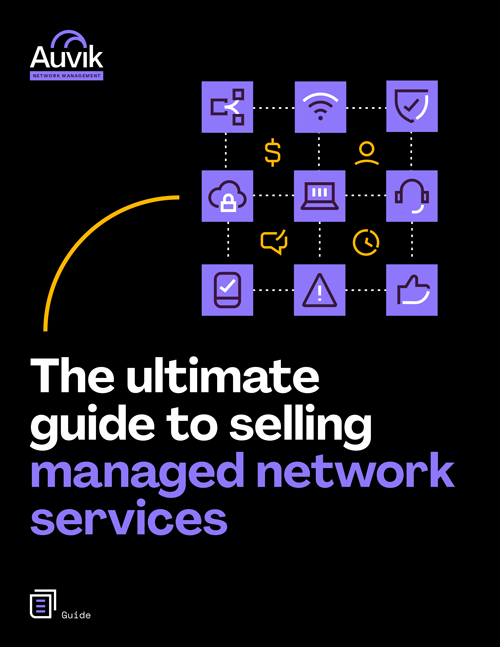A recent Honeywell survey reinforced something many in the MSP world already knew: data centers need managed service providers.
There are problems for you to solve, and there are plenty of other ways MSPs can add value for data center companies.
Challenges data center companies face
Any MSP that can help clients offload complex tasks like network installations, troubleshooting, automated backups, and disaster recovery can deliver value in just about any IT market segment, including data centers. That’s been the case for years and isn’t likely to change anytime soon. Where things get interesting is how the data center market is changing.
Today, cloud computing, fluid network perimeters, and edge computing are common. For data center companies, that represents a big shift from the castle-and-moat networks of the past.
This has created many new opportunities for MSPs in the data center market. While there are plenty of areas an MSP could help data center clients solve problems, there are two recurring themes we want to look at.

Your Guide to Selling Managed Network Services
Get templates for network assessment reports, presentations, pricing & more—designed just for MSPs.
Security, security, security
Data centers are high-value targets for threat actors. While there’s plenty of information on hardening data center infrastructures, like the National Cyber Security Centre and the Centre for the Protection of National Infrastructure’s joint data center security guidance, it still isn’t easy to keep data centers secure. Breaches and DDoS attacks regularly make headlines.
In some cases, even security basics at data centers go overlooked. Earlier this year, security researchers at Cyble found over 20,000 data center infrastructure management (DCIM) software instances that were publicly exposed, with many being poorly secured (e.g., using weak or default passwords or not patched).
Security is one of the big problems keeping facility managers up at night. In fact, the Honeywell survey found that 34% of data center facility managers experienced at least one disruptive cyber or physical breach during the previous year, and 72% indicated OT cybersecurity is a top concern.
Remote management
With less than a third of data center facility managers having remote management capability, it’s clear that MSPs can add value to the space. Being able to monitor and manage networks effectively is vital to maximizing uptime. In a world where MSP SLAs routinely include “five nines” (99.999% uptime), not having remote visibility and automated recovery can be risky.
Going beyond centralized data centers, remote monitoring should be table stakes for unstaffed “lights out” data centers and distributed micro data centers (MDCs) supporting edge computing. These deployment models move away from the old centralized data center model and create a need for distributed site management.
How MSPs can help data center companies
Let’s look at some specific ways an MSP can provide value within data center security and remote network management challenges.
Be the data center security expert
Ideally, an MSP should be their client’s trusted advisor for the infrastructure they manage. Security is top of mind for many data center managers, so an MSP that can provide cybersecurity expertise has a competitive advantage.
In data center markets, there are multiple areas where you can provide security expertise. At a high level, you can position yourself as a security expert if you have the tech expertise to back it up. Specifically, promoting managed security service providers (MSSP) or vCISO services for data centers can help you establish credibility and attract data center customers.
Perform network security audits
Initial network audits and security assessments are both great lead magnets and a great way to establish a technical baseline for the work required to harden a data center.
As the Cyble findings about DCIM software demonstrate, there’s plenty of room for improvement in the space that isn’t too technically complex. It’s just a matter of resources and knowing where to start. An initial audit helps you define problems and propose solutions. It can also provide the secondary benefit of automatically mapping and documenting the network.
Implement physical security controls
In a digital world, logical security controls get most of the attention, but physical access is also a major attack vector. Remote MDCs and unstaffed data centers can be particularly susceptible to physical threats because of the simple fact there’s no one around to see a threat actor tampering with a system.
Installing and maintaining infrastructure that helps strengthen physical security can be a great differentiator. Locking enclosures, doors secured by smart locks and biometrics, security cameras, and environmental monitors are all great ways to help mitigate physical security risks.
Emphasize resilience and redundancy
Availability is the “A” in the cybersecurity CIA triad, and uptime remains the data center KPI. MSPs can help data centers implement automated backup as a starting point. Other ITAM practices, such as automated patching, are another step toward keeping systems secure and available at scale.
MSPs can help further improve resilience by implementing redundant infrastructure to support failover. Disaster recovery sites in another physical data center or cloud environment help reduce the impact of a site outage. Similarly, software technology like SASE or SD-WAN that abstract network transports allow relatively seamless failover in the event a WAN link goes down.
Another often overlooked aspect of data center resilience is out-of-band (OOB) access using technology like console servers that include cellular modems. During a network outage, a console server with cellular OOB access can allow you to connect to network device console ports and troubleshoot remotely.
Provide granular network visibility and remote management
Data centers and enterprise network infrastructure are more distributed than ever. That makes everything from asset management to network security to performance monitoring more challenging.
As we saw with the Honeywell survey data, many data center operators aren’t where they want to be from a remote management perspective, and addressing that problem is something they value. MSPs that can manage distributed networks and provide data center operators with granular insights into their infrastructure can fill this gap. From a technology perspective, you’ll need tooling that supports network monitoring for traditional data center topologies and distributed site management.
Do you want to service data center companies? Ask yourself these questions
Successfully servicing the data center market as an IT MSP requires the right mix of marketing and tech skills. If you’re looking to make the leap, here are some key questions to ask yourself.
What’s your expertise?
“Data centers” is a broad category. Will you focus on SMBs that still operate on-prem infrastructure? Enterprises with distributed MDCs? A specific vertical like education IT?
Alternatively, will you be a full-service MSP or focus on a specific aspect of data center monitoring and management? Answering these questions will help you tighten up your messaging and hone in on where you add the most value.
Do you demonstrate value to clients?
Most data center operators know whether or not they need outside help to some extent. The challenge is quantifying what that help is worth. What KPIs and data can you use to entice new clients to give you a shot and demonstrate ROI to existing customers?
Vulnerability reports, network performance data, and availability metrics are just a few examples of where you can start.
Do you have the right tools?
Tooling isn’t everything, but it can significantly impact your operational efficiency and network visibility. That’s the case with network monitoring and management in general and is particularly true for MSPs in the data center space.
MSPs have to service multiple customers. Multiple discrete management systems for each client simply aren’t efficient at scale. So, you’ll want tooling that enables multi-site management without too much operational overhead. Additionally, your data center clients will likely use different vendors, and you’ll need monitoring solutions that support an extensive device library without compromising on visibility.
How Auvik can help data center MSPs
Auvik is purpose-built to address many network management challenges MSPs face, including data center MSPs. In addition to efficient multi-site management, Auvik helps MSPs lean into automation and streamline their operations to improve profitability and client satisfaction.
To learn more about how Auvik can help you grow your business, check out our MSP case studies!





